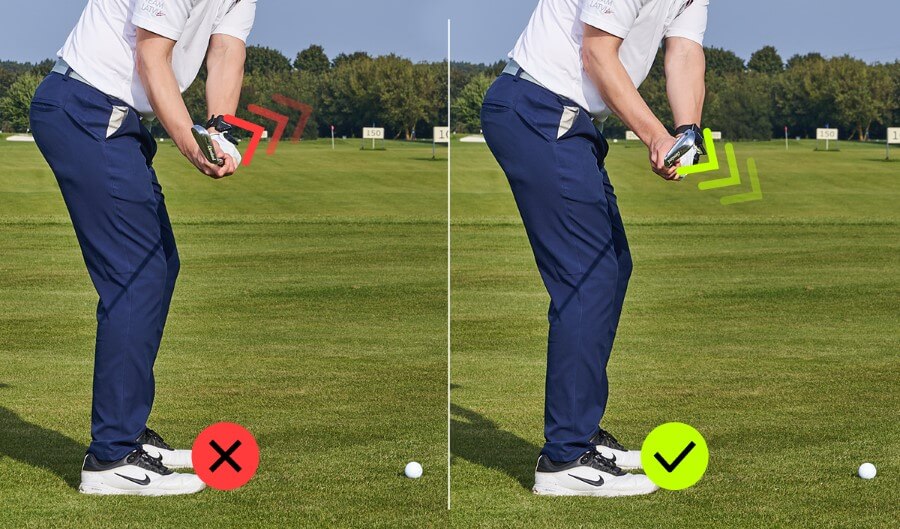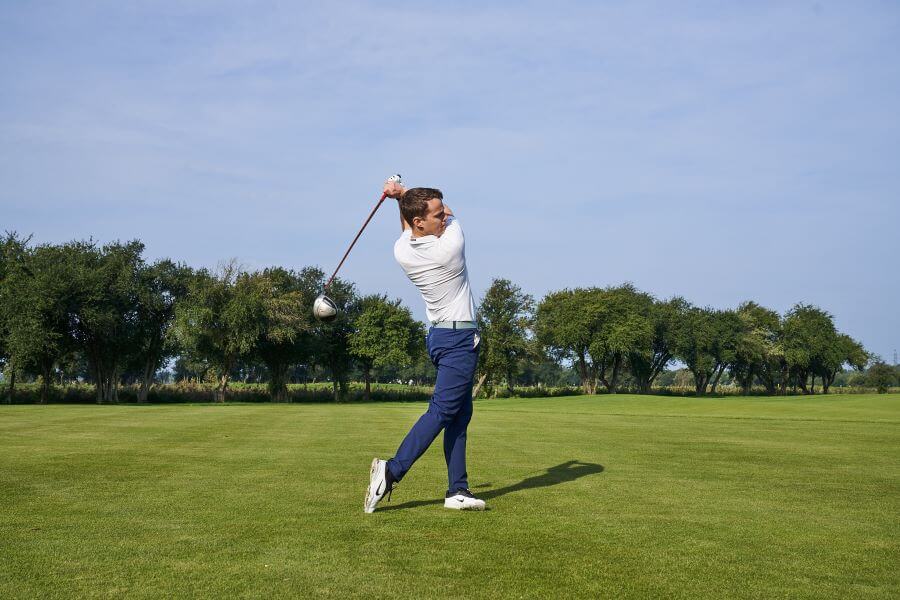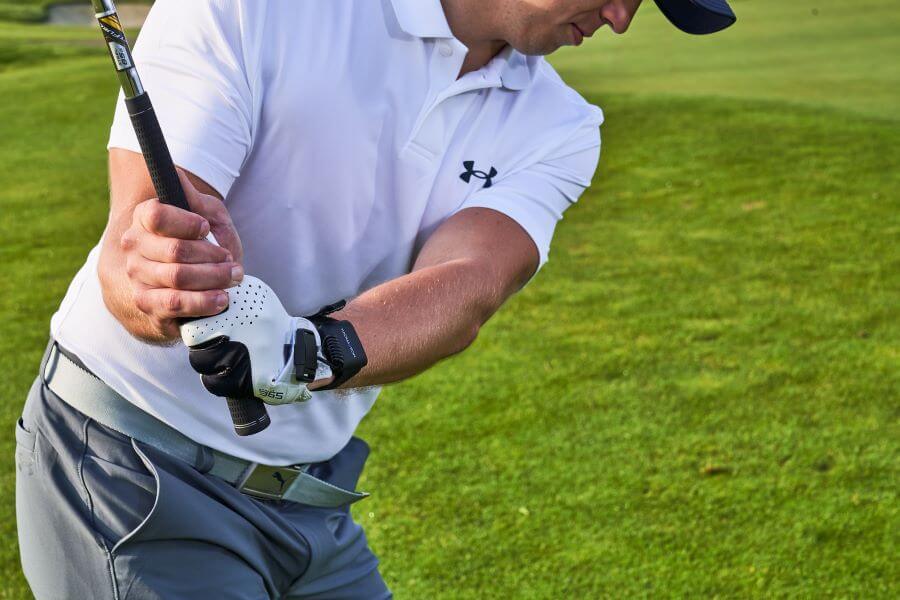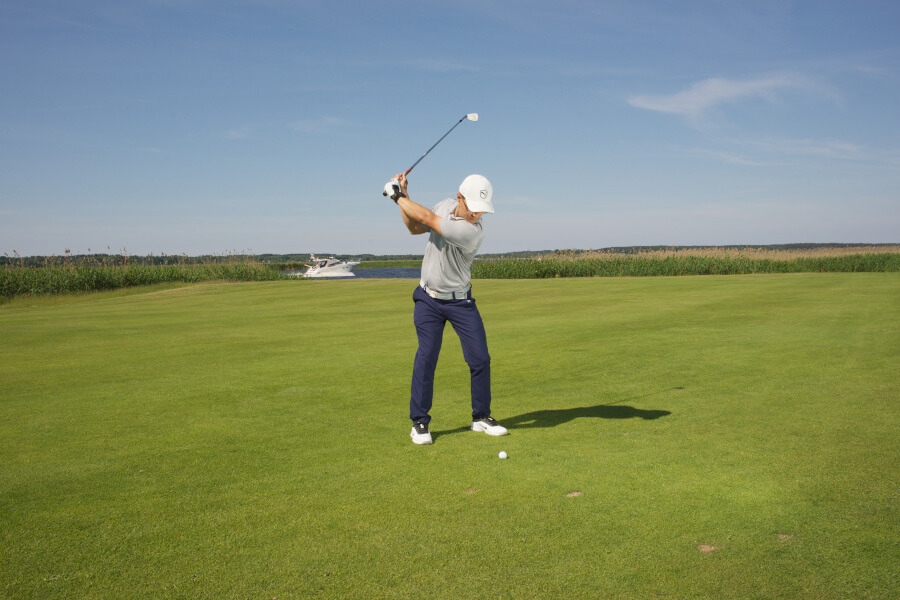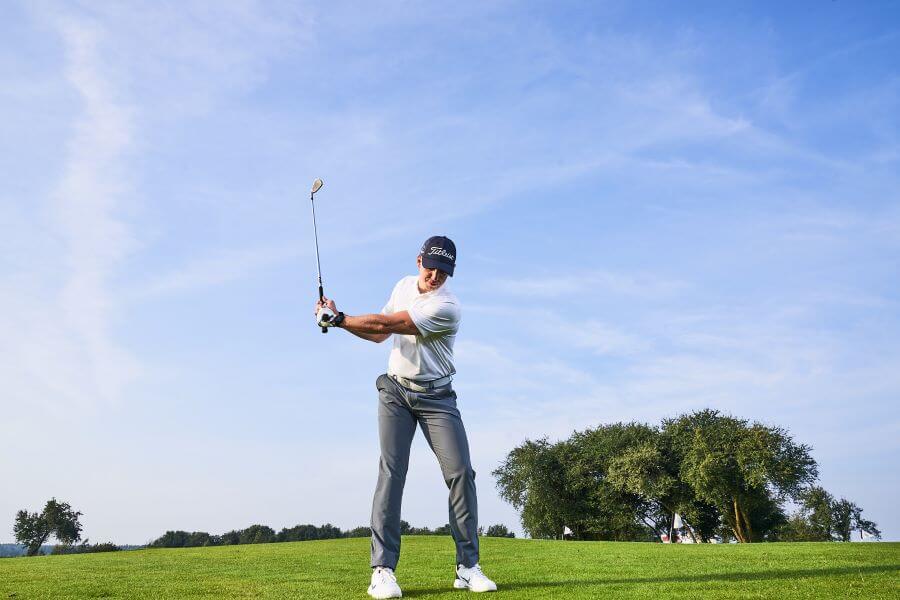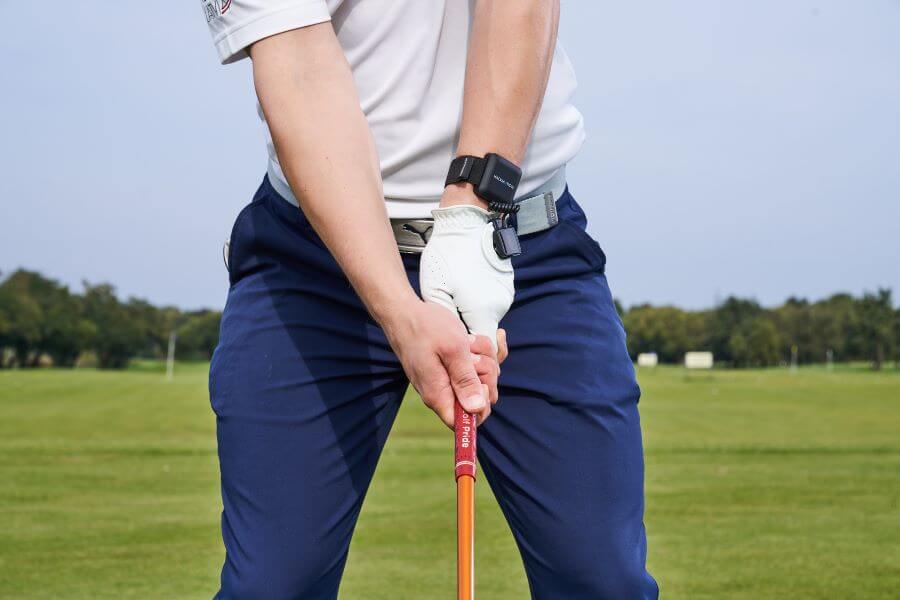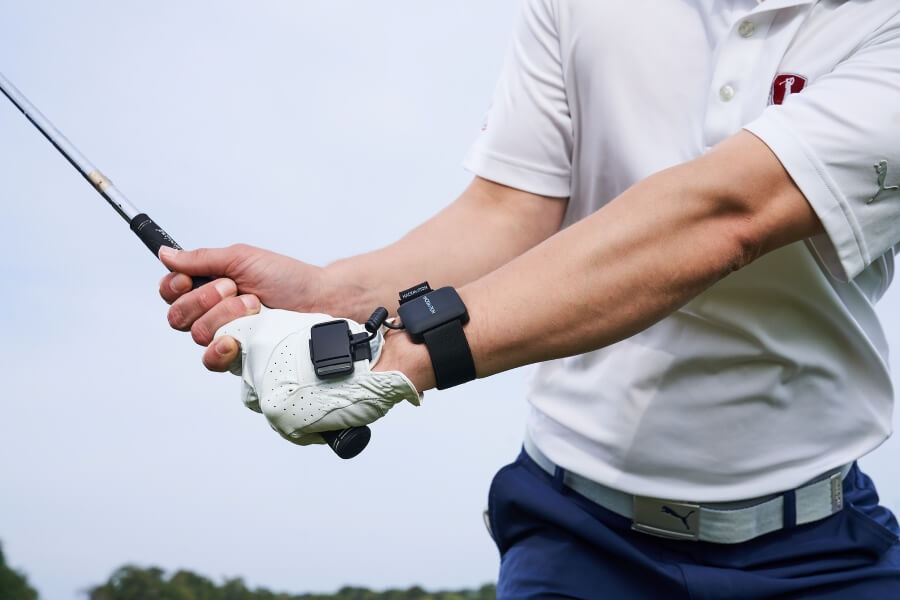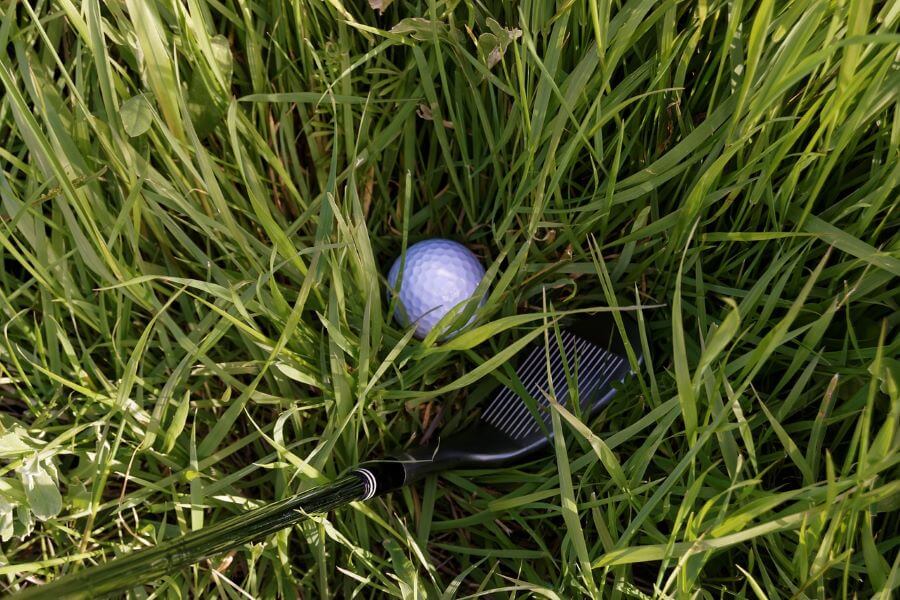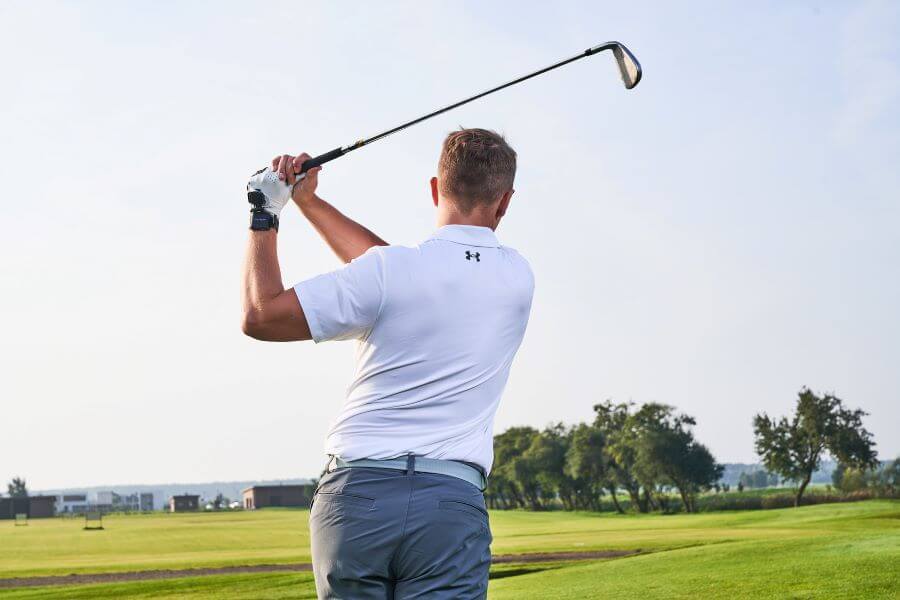Iron Swing vs Driver Swing (The Differences That Matter)
Golf is not a simple game; we know this.
One of the things that makes it a little more difficult is the fact that the swing for your golf irons and golf driver is not exactly the same. Some of the differences in the driver vs. iron swing are subtle.
However, you have to know them in order to master all areas of the golf game.
If you have been looking into the iron swing vs. driver swing difference, I have you covered.
We will examine how the angle of attack, ball position, swing length, and more are impacted when switching from irons to drivers.
Driver vs. Iron Swing (Key Takeaways)
If you are short on time and want just a quick rundown of the driver vs. iron swing. Here are all the things you should know.
- The most important difference between the driver and iron swing is the setup; if you don’t have the setup correct, don’t bother swinging the club back.
- The angle of attack for a driver is steeper than it is for an iron.
- Body rotation on an iron swing is more minimal and centered; for the driver swing, it can be a little wider.
- Wrist action in the driver swing may feel a little more subtle than it does with the iron swing, but the angles, as far as extension and flexion are concerned, will still follow similar patterns.
- Get a little more shoulder tilt at setup with the driver, to help promote the proper swing and impact position.
Contents
What are the Main Differences between Iron Swing and Driver Swing?
The main differences in iron swing and driver swing include:
- Angle of attack
- Ball position
- Shoulder tilt at setup
- Weight distribution at set up
- Body rotation
- Wrist angles
- Swing length
- Speed
These differences don’t need to confuse you or have you feeling overwhelmed when moving from the tee box to the fairway. Instead, if you learn the positions and the differences, you can approach these things with much more knowledge and understanding.
Master the Angle of Attack to Dial in Your Accuracy
One of the most significant differences between an iron swing and a driver swing is the angle of attack.
In an iron swing, you will need a descending angle of attack to hit down on the back of the ball. Hitting the golf ball this way compresses it and launches the golf ball into the air.
A driver swing requires an upward angle of attack to give the ball maximum air time off the tee and encourage more carry and distance from the shot.
This level-to-slightly ascending attack angle is crucial for launching the ball off the tee, whereas a descending attack angle is necessary for letting the club’s loft get the ball off the ground.
These differing angles of attack are key components of a successful iron and driver swing and must be understood and executed correctly for optimal performance.
Impacts of Poor Attack Angle
A poor angle of attack can cause the club to hit the ground before the ball, resulting in a fat shot or loss of power.
With an iron swing, a descending angle of attack is necessary for proper compression and lift, but if it’s too steep, it can result in a chunked shot or a lack of distance.
In a driver swing, a level-to-slightly ascending angle of attack is needed to launch the ball off the tee, but if it’s too much, it can result in a high ball flight and less carry distance.
Mastering the Angle of Attack
There are two ways to make sure your angle of attack is correct. You can use a launch monitor and the HackMotion. HackMotion gives you information about your wrist angles through impact and whether or not you are maximizing the flexion in your lead wrist.
Most players will be more flexed at impact for the irons than they are for the driver (this is a good thing!).
In addition, you can use a launch monitor and measure the launch angle of your drives and irons to ensure it is in the optimal range. For a driver, this is typically in the 10-14 degree range; for a 7 iron, it will be closer to 15-20 degrees.
Proper Ball Position in the Iron Swing vs Driver Swing
As important as all the driver vs. iron swing adjustments are, the proper ball position seems to be the most important.
The bottom line here is that as the club gets longer, the ball has to move closer to the front of your golf stance.
- Keep the ball in line with the heel of the lead foot for the driver.
- Move the mid irons back to the direct middle of your stance.
- Long irons should be placed between the driver and the mid irons depending on the length of the club.
Impacts of Improper Ball Position
The correct ball placement controls exactly where you make contact with the ball. Point of contact ensures clean clubface and ball interaction. If you don’t have proper ball position with the driver or the iron, expect issues with poor contact, reduced distance, loss of accuracy, and the inability to control ball flight.
Mastering the Ball Position
Even if you aren’t ready to make big changes in the swing plane or the angle of attack, the ball position is a simple first step to changing this iron swing vs driver swing dynamic in your golf game.
When practicing at the driving range, ensure you have alignment sticks in place to help you understand the exact ball position that works for your game. Start with finding the middle of your stance and hitting 7 iron shots, and then move the ball up slightly for the 6, 5, and 4 irons.
Watch this video for a better explanation of the importance of ball position.
Driver vs. Iron Swing Body Rotation
When using a driver, the swing is typically longer with a more significant body rotation, as the driver is designed to generate more speed and distance.
A longer swing with a full body rotation can create the necessary force to maximize the speed of the clubhead at impact. More speed leads to more distance.
Let’s not forget the driver is also longer and requires a bit more effort.
In contrast, the swing is typically shorter and more controlled when using an iron, with a more balanced weight distribution at setup.
Impacts of Poor Body Rotation
When your body rotation with an iron is too much or inaccurate, you will have a hard time striking the ball the correct way each time. Turf interaction is different, and overall inconsistency is high. The biggest issue we see with the driver is loss of power and distance.
Watch this video below for a better explanation of long swings vs short swings.
Mastering Body Rotation
Start each golf swing with a turn of the body. Proper body rotation allows you to time your swing, improve overall tempo, and interact consistently with the turf.
Make sure that you rotate your lower body as part of your takeaway.
Shoulder Tilt and Weight Distribution at Setup
At setup, your shoulders will be tilted (with the trail shoulder down) when you hit a driver. With an iron, it’s best to have more of a square shoulder line.
When the shoulders are tilted properly for the driver, you set yourself up to hit the ball as part of your upswing. With the iron shots, you want to hit down and through the ball.
Hitting a solid driver shot includes a bit more of a weight transfer than hitting a solid iron shot. Therefore when you set up with this slight shoulder tilt, don’t be afraid to put a little extra weight on the right side.
Impacts of Improper Shoulder Tilt and Weight Distribution
If your shoulders are tilted incorrectly, and you have this mixed up, expect a lot of inconsistency in the shots you hit. You may hit drives that are too low, or iron shots that are too high, or even hit clunky (behind the ball).
Mastering Shoulder Tilt and Weight Distribution
For the driver, set up with your shoulders square and then just slightly drop the trail shoulder by an inch or so. Hit some shots from this position and see if you need to drop it a bit more to see the full effects.
Use video and pictures to make sure you have this down.
Wrist Hinge and Motion
Another important factor with the iron swing vs driver swing is wrist hinge and motion.
With the driver swing being longer and wider, there is a little less hinge for most players. The iron swing is more compact and condensed, and that wrist hinge is important for both power and turf interaction.
Most golfers have their hands pushed slightly forward into a forward press position at setup.
This forward press allows for better turf interaction, higher ball flight, and more consistency. If you tend to flip or lose the position during the swing, it will create problems.
Impacts of Improper Wrist Angle
When the wrist angle is incorrect for the driver or the iron, you can expect a loss of power and control. Improper wrist angle will often leave the clubface wide open, making it difficult to square it up and hit a perfect shot.
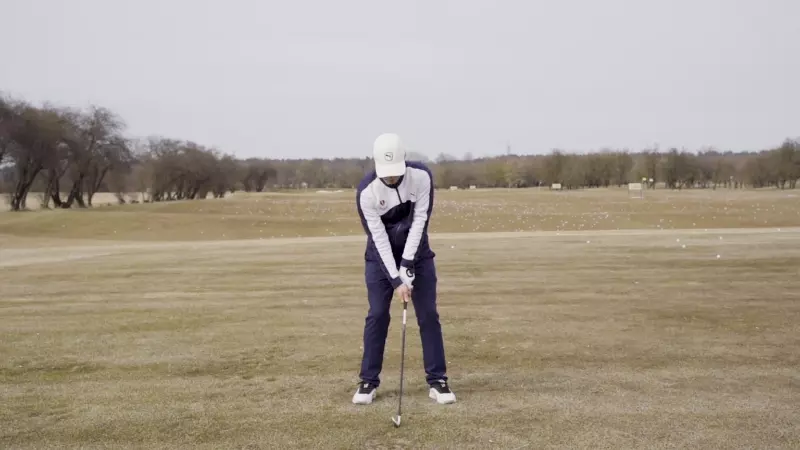
Mastering Wrist Angle Driver vs Iron Swing
The best way to master wrist angle in the driver swing and iron swing is to use the HackMotion. This process can be followed to achieve better results.
- Start by collecting baseline data for both the driver and the iron.
- For the driver, you will want to ensure that lead wrist extension from the top of the golf swing to impact is decreasing, leaving the wrist very close to flat at impact.
- For the iron, you will look for the same thing to happen; however, at impact, make sure that there is more flexion in the lead wrist to compress the golf ball and hit a straight shot.
Use HackMotion audio feedback to set a range for proper wrist angles in the driver and iron swing. If you are tired of losing power and accuracy and want to ensure a high and repeatable ball flight, get your wrist angles right.
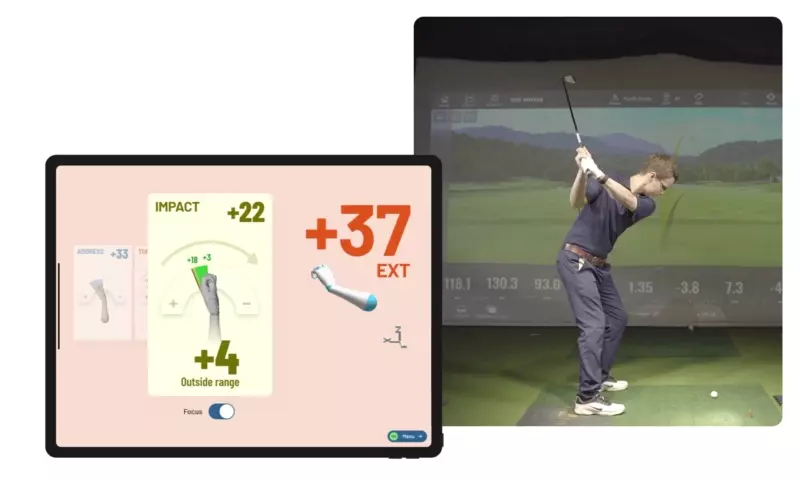
HackMotion – How to Nail the Driver vs. Iron Swing
Understanding the perfect wrist position is a difficult concept for most golfers.
The problem is how the position changes as you move through your golf swing. The wrist position at setup is not the same at the top, at impact, etc.
HackMotion is a tool that allows you to understand the proper wrist position at setup and throughout the swing. Better yet, it happens in real-time, so you can make the connections you need to feel these differences in your game.
For players who are struggling with where to put their wrists and how they work in the swing, the HackMotion can make all the difference.
Final Thoughts
Educating yourself about the key differences between a driver’s swing and an iron swing is crucial in lowering your score.
Awareness of these general concepts will allow you to immediately adjust your swing on the course.
Take some time to practice these different positions and features, learn about the positions using your HackMotion, and you will be well on the way to better consistency and performance.





